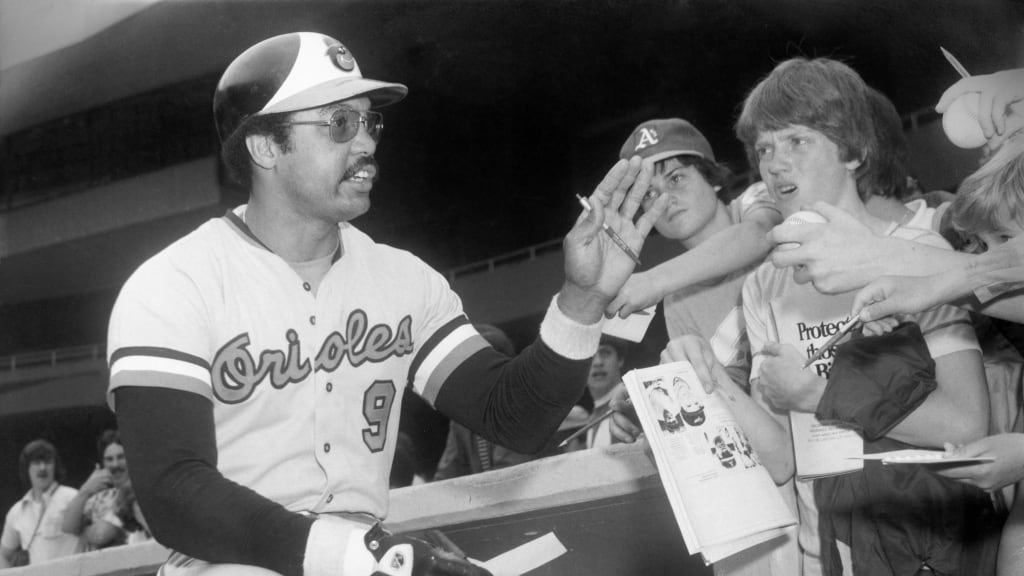
You may have heard that Reggie Jackson lit up Yankee Stadium by crushing three home runs in the clinching Game 6 of the 1977 World Series. In a Hall of Fame career filled with signature moments, none is more iconic than that one.
Less well known is that Mr. October might very well have been playing for the Baltimore Orioles that fall. That he might have hit those home runs in Charm City. In looking back on one of the most surprising trades ever made, that’s a good place to start.
Let’s pause there for a moment. How different would history be if Jackson had never played for the Bronx Bombers? If his Orioles tenure had lasted for more than one largely forgotten season, and he had led Baltimore to that 1977 Fall Classic instead?
Your mind is blown, isn’t it? Here’s the deal: Jackson apparently was open to the possibility. Should the Orioles have had just a bit more understanding of where baseball was headed, we might remember him as a Bird. That’s the tantalizing possibility of the trade that sent Jackson from the A’s to the Orioles, on this day in 1976.
It was a trade that stunned the baseball world because Jackson had just helped the A’s win a fifth straight division title. During that time, they won the World Series three straight seasons (1972-74), and Jackson won the American League Most Valuable Player Award in ‘73.
Why trade him? Jackson was 29 years old in the spring of 1976, and he was arguably baseball’s biggest star. But that spring, baseball was about to be ushered into the world of free agency. A’s owner Charlie Finley, foreseeing the impact on the sport, was ready to dismantle his club.
One week before Opening Day in 1976, he sent Jackson to the Orioles in a six-player trade. In the end, Jackson played just one season in Baltimore before signing a five-year deal worth around $2.9 million with the Yankees.
Jackson’s one season with the Orioles has been lost in the dust bin of history because the team finished 10 1/2 games behind the Yankees in the AL East. Their 88 wins were the second fewest during Earl Weaver’s first run as manager.
But Jackson had one of his best seasons -- 27 homers, 28 stolen bases, .853 OPS -- in a career defined by being part of five championship teams.
Let’s look back at the trade, 44 years later:
1. Why would the Orioles acquire a player in his final season before free agency?
That’s the best part of this whole thing. They didn’t know Jackson was headed toward free agency. No one did. Owners and players didn’t work out a collective bargaining agreement that would make free agents of Jackson and dozens of others -- including Don Baylor, who went to Oakland from Baltimore in the deal -- until July. The Orioles knew there’d be some sort of free agency at some point in the future. They just didn’t know it would send Jackson packing after one season.
2. How close did Jackson come to re-signing with the Orioles?
He was open to the possibility. Or at least Jackson said so, telling Baltimore baseball writer Jim Henneman years later he made the Orioles an offer: $300,000 a season for five years. That seems plausible, because he held out for 16 games after the trade to get $200,000. So the idea of paying him $300,000 a season was more than the O’s could stomach. Turns out, that would have been a bargain, and Jackson ended up signing with the Yankees for almost twice that: $580,000 a season for five years. Even without Jackson, the 1977 Orioles won 97 games and finished just 2 1/2 games behind the Yankees. Jackson could have swung the AL East toward Baltimore.
3. Why did Orioles general manager Hank Peters trade for Jackson?
Peters got Jackson, veteran left-hander Ken Holtzman and Minor League righty Bill VanBommel for Baylor and righties Paul Mitchell and Mike Torrez. Forget the other names. This was a Baylor-for-Jackson deal, and even though Baylor was a revered figure in the Orioles' clubhouse, Peters was in his first season as general manager and didn’t have deep ties to the clubhouse status quo. Also, the Orioles needed a left-handed hitter at a time when Brook Robinson’s career was winding down and much of the power came from three right-handed hitters: Baylor, Bobby Grich and Lee May.
4. What was in it for the A’s?
Finley saw the balance of power shifting to the players and wanted no part of the salaries they’d command in free agency. Later that season, Commissioner Bowie Kuhn vetoed his attempt to sell Vida Blue to the Yankees and Joe Rudi and Rollie Fingers to the Red Sox. The A’s didn’t make the playoffs again during Finley’s ownership, and he sold the club in 1980.
5. How did Jackson and O’s manager Earl Weaver get along?
They had one huge blowup when Jackson showed up for a team flight in a Members Only jacket instead of the required blazer. Otherwise, it appeared to be smooth sailing. Robinson and Jim Palmer welcomed Jackson to the club with friendly voicemails after the deal. But the deal wasn’t popular in the clubhouse. Baylor thought of himself as an Oriole for life, and he and Weaver both wept when the deal was made (as did Torrez).
“He’s going to be a Most Valuable Player,” Weaver said of Baylor, who fulfilled that prediction for the Angels in 1979.
6. Sounds like one of those trades that delivered more buzz than substance.
Jackson did his part for the 1976 Orioles, but the Yankees had one of the game’s best bullpens and got monster years from third baseman Graig Nettles and Ed Figueroa to go virtually wire to wire. They had a seven-game lead in mid-June and were never really challenged. The Orioles were back in the mix in 1977 with the debut of future Hall of Famer Eddie Murray. If they could have stacked Jackson and Murray in the lineup, the '77 season might have had a different ending.
